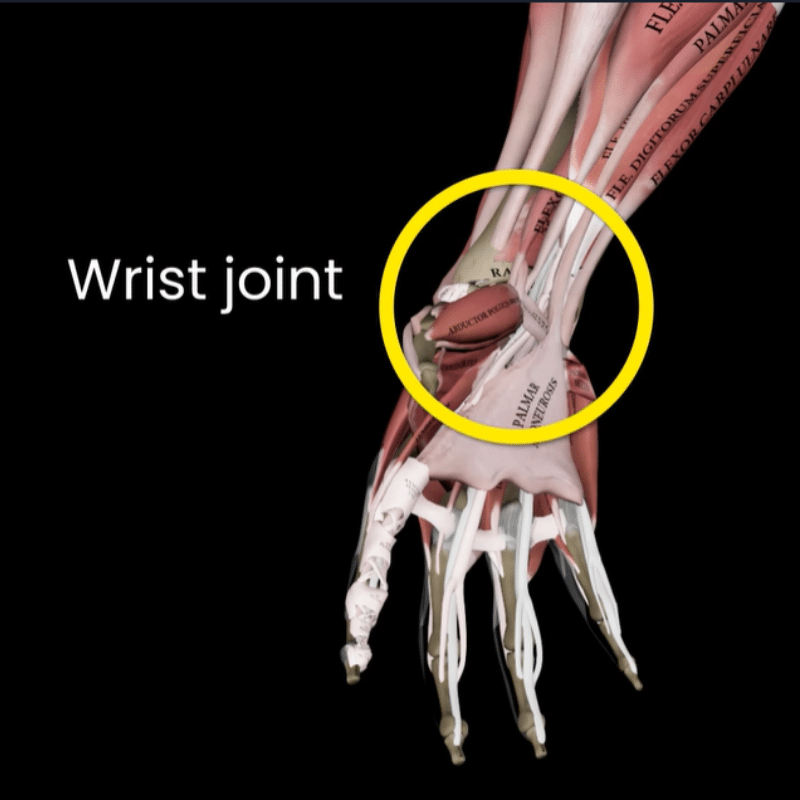Wrist pain is a prevalent issue among fitness enthusiasts, often stemming from weightlifting, sports, and repetitive motions. Understanding the intricate anatomy of the wrist and its root causes is essential for devising effective strategies to alleviate discomfort and optimize performance during workouts.
In this Muscle and Motion comprehensive guide, we will delve into the anatomy of the wrist joint, explore various factors contributing to wrist pain, and provide detailed approaches for managing and preventing it during exercise.
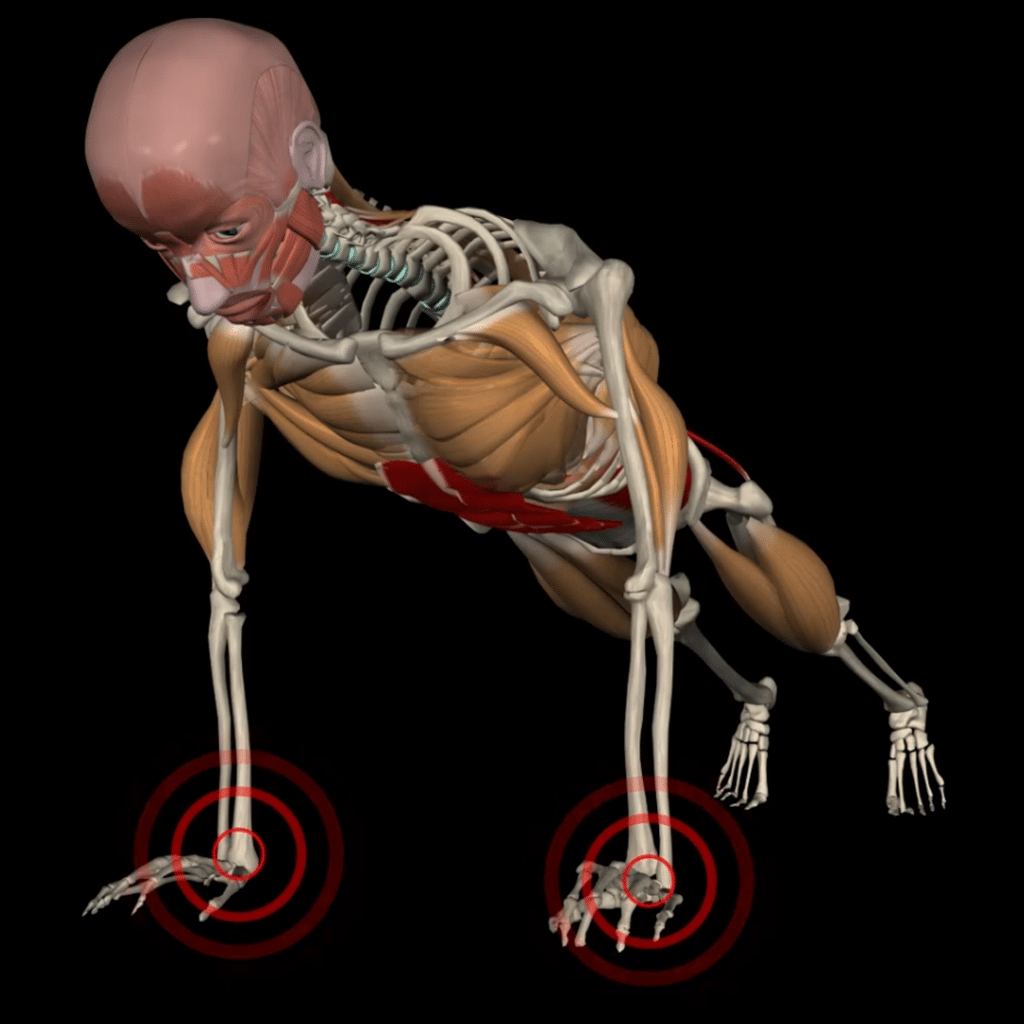
Anatomy of the wrist joint
The wrist joint, also known as the radiocarpal joint, is a complex structure comprising various bones, ligaments, tendons, and muscles. It is a crucial link between the hand and the forearm, facilitating a wide range of movements essential for daily activities and sports. The wrist joint is comprised of the following parts:
- Bones: The wrist joint consists of eight carpal bones arranged in two rows: the proximal row (scaphoid, lunate, triquetrum, and pisiform) and the distal row (trapezium, trapezoid, capitate, and hamate). These bones articulate with the radius and ulna of the forearm, forming a stable yet mobile joint.
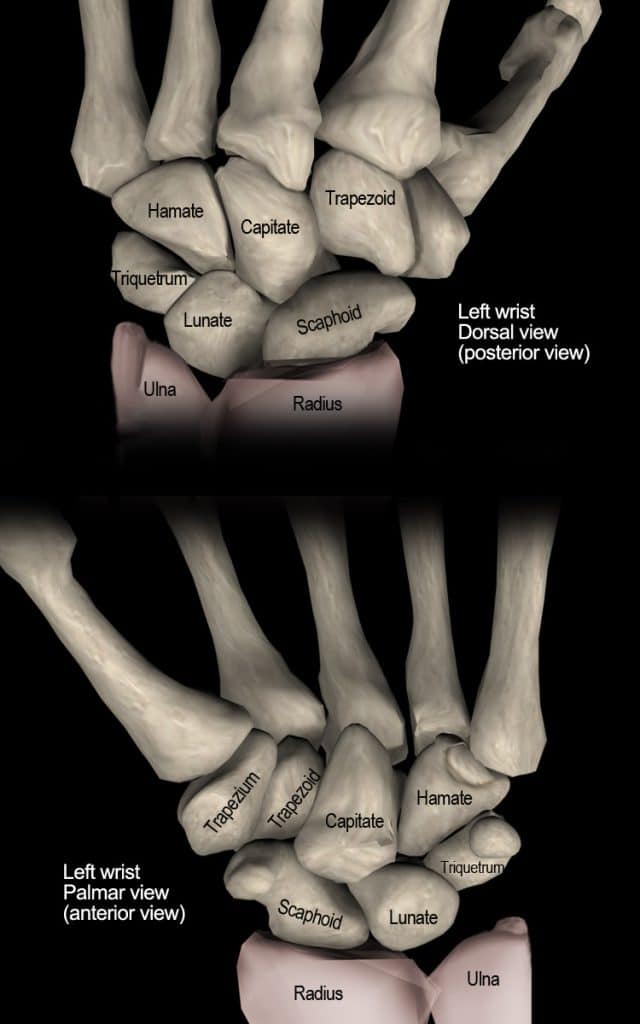
- Ligaments: Ligaments are fibrous connective tissues that provide stability and support to the wrist joint. Key ligaments include the volar and dorsal radiocarpal ligaments, which prevent excessive flexion and extension, respectively, as well as the ulnar and radial collateral ligaments, which reinforce the joint’s lateral stability.

Tendons & muscles: Tendons, tough connective tissues, link muscles to bones, which is crucial for joint motion. In the wrist, tendons from forearm muscles enable flexion and extension. The forearm’s flexor and extensor muscles, located on its front and back, respectively, facilitate wrist movement. Additionally, the hand’s intrinsic muscles aid in fine motor skills and grip strength.
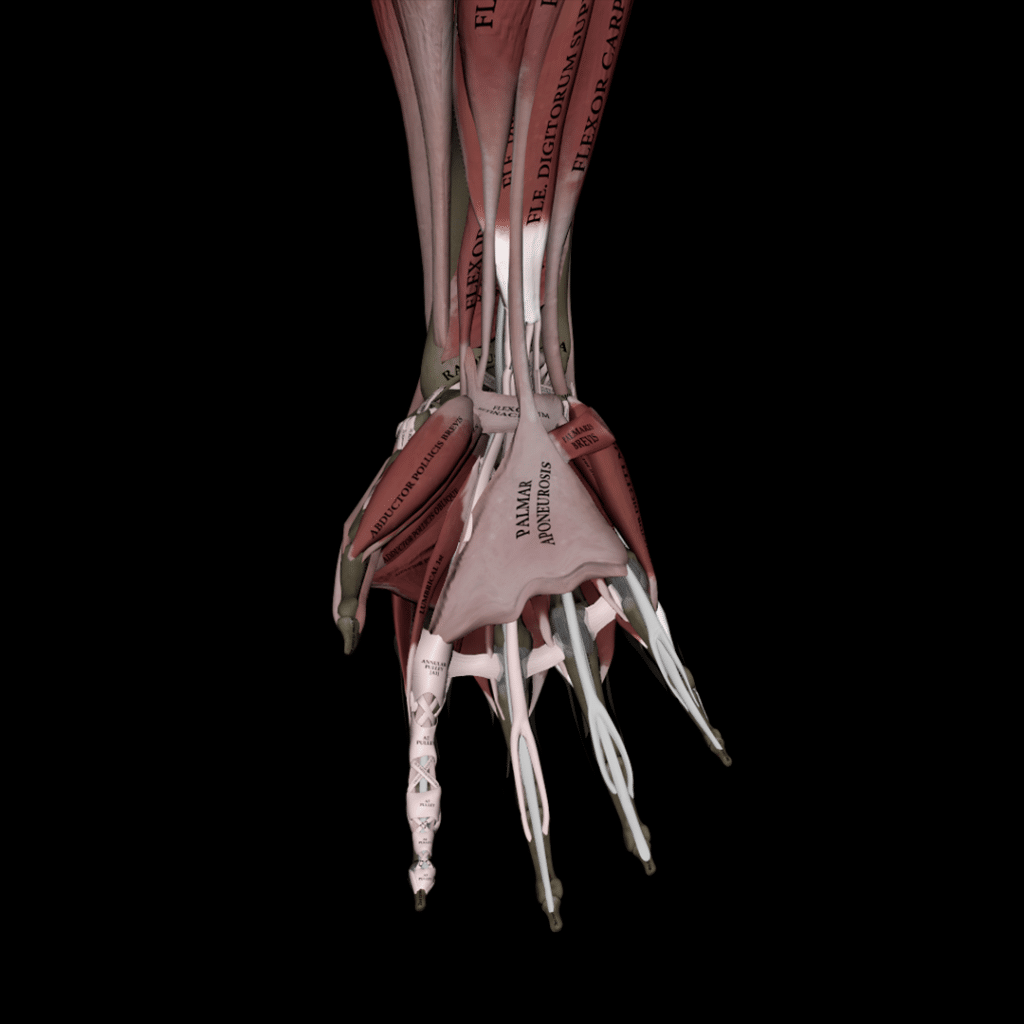
Wrist joint movements
The wrist joint, classified as an ellipsoidal (condyloid) synovial joint, facilitates movement across two primary axes. This structural design enables the wrist to perform four fundamental movements: flexion, extension, adduction, and abduction, Let’s review each movement and which are the primary muscles in charge of it.
- Flexion: Primarily performed by the flexor carpi ulnaris and radialis andthe flexor digitorum superficialis, ranges from 0 to 80 degrees.
- Extension: Primarily performed by the extensor carpi radialis longus and brevis, along with the extensor carpi ulnaris, and assisted by the extensor digitorum, ranges from 0 to 70 degrees.
- Adduction (Ulnar Deviation): Primarily performed by the extensor and flexor carpi ulnaris, ranges from 0 to 30 degrees.
- Abduction (Radial Deviation): Primarily performed by the abductor pollicis longus and the flexor and extensor carpi radialis, ranges from 0 to 20 degrees.
Understanding the intricacies of wrist anatomy provides valuable insights into the biomechanics of the joint and the potential sources of pain and dysfunction. Now, let’s explore the common causes of wrist pain during exercise and effective strategies for addressing them.
Common causes of wrist pain during exercise
Wrist pain during exercise can result from various factors, including:
- Overuse and repetitive stress: Engaging in repetitive motions or placing excessive stress on the wrist joint, such as during weightlifting, can lead to overuse injuries like tendonitis or carpal tunnel syndrome.
- Limited range of motion: Restricted mobility in the wrist joint, particularly in dorsiflexion or extension, can predispose individuals to injury and contribute to wrist pain during certain movements.
- Muscle weakness: The impact of muscle weakness in the forearm and hand of healthy individuals is not extensively documented. However, addressing any muscle weaknesses can be beneficial to improve risk pain. Note: If you notice any new or sudden major weakness in your hand muscles, it is important to consult your primary care provider to exclude any underlying causes.
- Underlying conditions: Certain medical conditions, such as arthritis, ligament tears, or nerve compression, can manifest as wrist pain during physical activity and require specialized treatment.
Now that we’ve identified potential causes of wrist pain let’s explore practical strategies for managing and preventing it during exercise.
Strategies for managing and preventing wrist pain
Effective management and prevention of wrist pain involve a multifaceted approach that addresses biomechanical factors, strength and flexibility imbalances, and exercise techniques. Here are comprehensive strategies for managing and preventing wrist pain during exercise:
1. Modify painful exercises
Many exercises, such as push-ups, handstands, and planks, can exacerbate wrist pain due to the weight-bearing nature of these movements. Modifications can be made to minimize discomfort:
- Use an elevated surface: Placing a yoga block or folded mat under the base of the palm reduces wrist dorsiflexion, thereby alleviating strain.
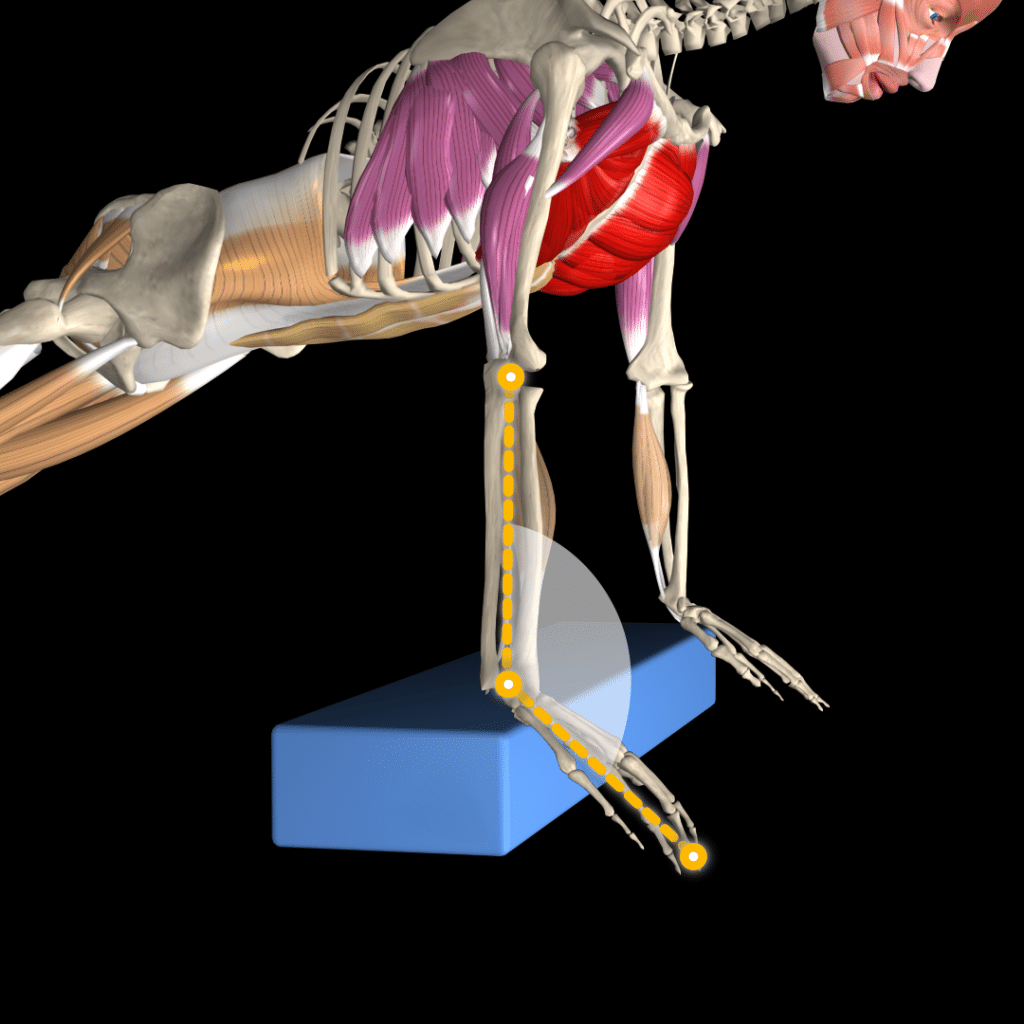
- Utilize parallel bars or dumbbells: Performing exercises with neutral wrist positioning can reduce pressure on the wrists.
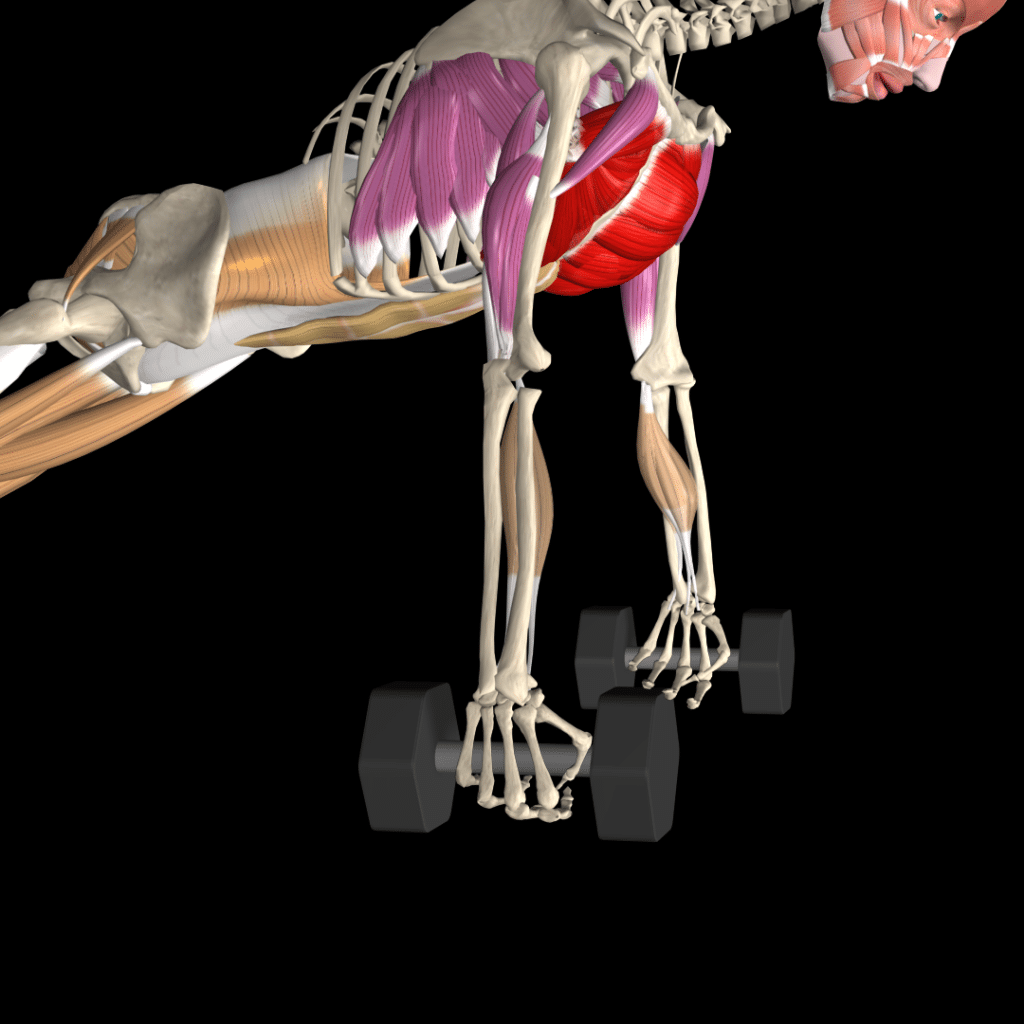
- Mobilization with movement technique: Applying gentle force using a resistance band while performing exercises can help alleviate wrist pain.
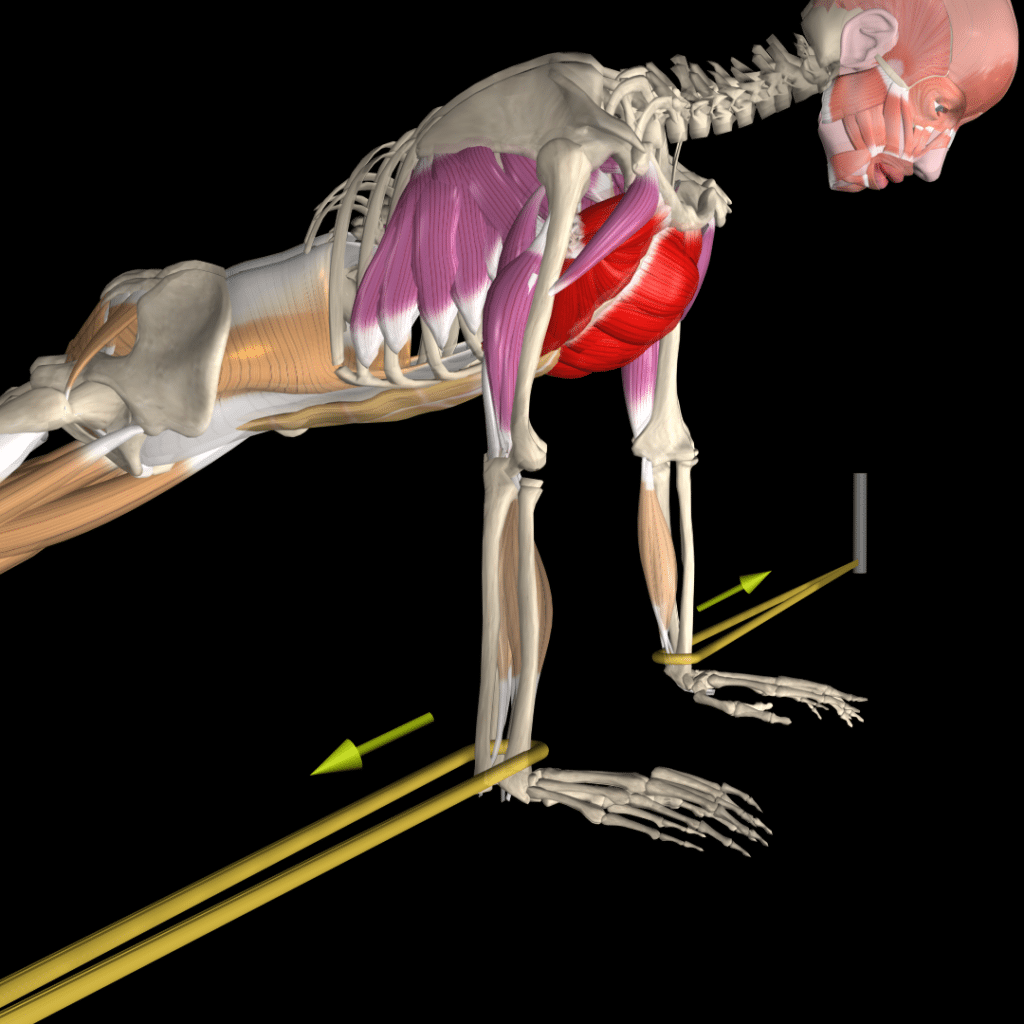
2. Address range of motion limitations
Restricted wrist mobility can contribute to wrist pain, particularly in dorsiflexion (extension). Assessing wrist range of motion and incorporating stretching exercises can improve flexibility and reduce discomfort. Use this effective self-assessment:
- Place your palms together in front of you.
- Slowly lower your hands while simultaneously spreading your elbows apart.
- Aim to form an angle of about 70-90° at each wrist during this motion.
This evaluation assists in identifying potential limitations in wrist dorsiflexion. To assess plantar flexion mobility, press the backs of your hands together instead. Should you discover any constraints in movement, integrating wrist stretching exercises into your daily routine is advisable to improve flexibility and range of motion.
3. Strengthen wrist and forearm muscles
Having strong wrists is essential for maintaining stability during weightlifting and weight-bearing exercises. A sturdy grip ensures you can confidently handle weights during challenging workouts. Consider using compact tools like stress balls or spring grippers to strengthen your grip. These aids can effectively enhance your grip strength. Furthermore, targeting the forearm muscles is crucial to bolster wrist strength. Employ resistance bands or small weights to create resistance against wrist movements. This approach not only helps prevent wrist injuries and discomfort but also contributes to overall wrist health.
4. Improve grip strength
While isolation exercises may help you improve your grip strength to some length, there is a need for more functional exercises to be employed to transfer the ability to use your grip in everyday activities. Strong grip strength is essential for safely handling weights and equipment during workouts. Incorporate grip-strengthening exercises such as sandball carry, farmer’s walk, and the dead hang to elevate your grip strength further. These exercises can take your wrist strength to the next level, allowing you to tackle more intense workouts confidently.
5. Enhancing wrist stability and neuromuscular control
Once you’ve strengthened your grip and forearm, focus on exercises to enhance wrist control and stability. These exercises fall into two categories: open kinetic chain exercises and closed kinetic chain exercises.
- Open kinetic chain exercises: Include exercises such as the “bottoms up” kettlebell carry and practice ball throwing and catching. These exercises challenge wrist stability when your hand isn’t fixed to a surface.
- For closed kinetic chain exercises: Try push-ups with a rolling ball, straps, or on a BOSU ball. These exercises demand wrist stability while your hands touch unstable surfaces, improving wrist motor control.
Integrating both exercises into your routine will improve wrist stability, benefitting overall wrist health and performance.
6. Allow for adequate rest and recovery
Recognizing the need for rest and recovery is as vital as selecting the right exercises to ease wrist pain. It’s not merely about workout intensity; it’s about allowing your body the necessary time to heal. Adequate rest isn’t just a break; it’s a critical phase for body repair and strengthening, crucial for preventing injuries, especially to sensitive areas like the wrists. Including rest days in your routine gives your wrists time to recuperate from exercise-induced stress, reducing the risk of pain and enhancing overall muscle recovery and strength.
In summary, managing and preventing wrist pain during exercise is not solely about adhering to a regimen; it’s about understanding our bodies and their intricate mechanisms. This comprehensive guide offers valuable insights and practical solutions for fitness enthusiasts to maintain optimal wrist health, ensuring they can pursue their training goals with as little pain as possible.
Ever wondered what makes our anatomical animations so accurate and engaging? Click here to learn about our Quality Commitment and the experts behind our content.
At Muscle and Motion, we believe that knowledge is power, and understanding the ‘why’ behind any exercise is essential for your long-term success.
Let the Strength Training App help you achieve your goals! Sign up for free.
